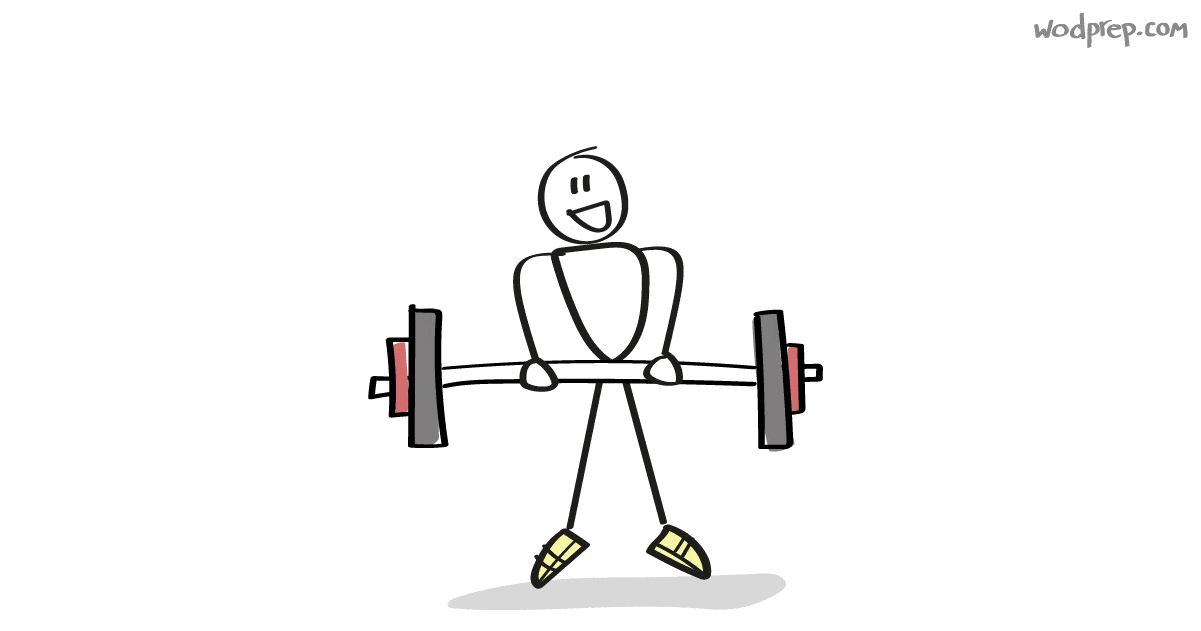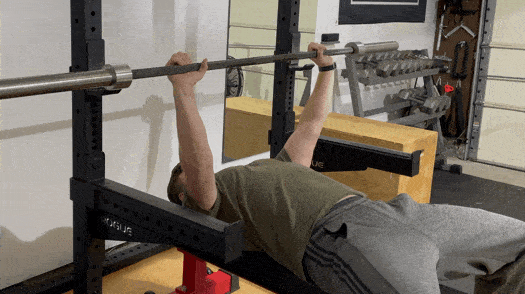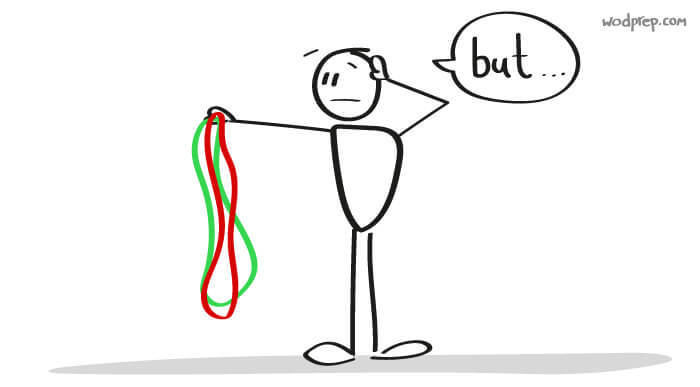Shoulder impingement syndrome is a common diagnosis that many of us have probably been given from a health care provider or heard about from a friend or family member when we are having shoulder pain or symptoms. It's been explained to us that the cause of our pain and symptoms is caused by a pinching of a tendon of the rotator cuff between some bones in our shoulder (part of the scapula aka shoulder blade), and that to decrease those symptoms, we should probably just avoid lifting our arms over our head for a while and do some goofy band exercise that have little to do with what we want to get back to. In the WODprep case, that exercise is mainly CrossFit, and it has a lot of overhead involvement! So what are we to do?
Let's first talk about the specifics of shoulder impingement and what we know about it. First of all, “shoulder impingement” or "impingement syndrome" is an older term that isn't exactly accurate anymore when considering the symptoms that we feel when reaching overhead. While it still exists in medical literature, when reviewed, you will see that a good bit of those articles are calling to end the use of that phrase!
For now, let's just call it shoulder pain instead. Many scientific studies have come out over the last 5-10 years questioning the very relationship of those bones and tendons and the pain that they are alleged to have. This is good news for us because it shows that we are improving our knowledge about pain and symptoms and the rehabilitation process.
We now know that it is actually very normal to have this internal “pinching” action occur within the shoulder and that the source of pain might be more so from the activities that we were performing and the load that we applied to ourselves in those activities. We also know that exercise has very similar outcomes regarding treatment for this shoulder pain than passive interventions like heat, ice, manual therapy, injections and even surgery. The benefit of using exercise as a means of rehab is that we can still do the things that we love to, or as close as we can to them, and also reap all of the health benefits of continuing to train.
Which shoulder exercises should I avoid?

There are a whole host of things that can contribute to shoulder pain, many of which are overhead activities, but they can also include horizontal pulling and horizontal pushing to name a couple more. Just because these things can contribute to shoulder pain doesn't mean that we should avoid them. So what should we do? That answer certainly depends on the situations and the cases, but there is a general formula to follow regarding pain and training:

Assess your situation
Modify the load
Modify the range of motion
Modify the exercise
Was there any traumatic event? Is there anything hanging off of you? Signs of damage to your person? Or was this just a slow development or something that just kind of happened? This step can help dictate whether or not you should seek further help.
Can you remove some weight from the bar, or modify the load during your symptomatic movement? Maybe instead of push pressing 95lbs you move the weight down to 85lbs or 75lbs. You can also attempt to decrease the volume or numbers of repetitions you are performing or the number of days per week you are doing that movement.
Unable to find a weight that you can complete your shoulder activities with a full range of motion? The next step is to try to modify the movement until you can. Try adding a box or a target or doing a movement from pins (see GIF below) in order to reduce the range of motion. All of these are still better than stopping altogether.
If you still are unable to train without tolerable symptoms or the way that you had hoped, changing the movement itself can be an option as well! Changing from a strict handstand pushup to a kipping handstand pushup or even a handstand hold are all great substitutions for the time being until you are able to tolerate the goal movement again!

Why Aren't There Specific Exercises To Do?

When considering shoulder pain, or pain as a whole, it is easy to try to make common sense connections between changes in tissue structure and the pain/symptoms that you are feeling. We know that pain is complex and not something that we can always make our way through with common sense, because fortunately and unfortunately, there are many more factors that come into play when considering the topic.
Fortunately in that we can exist with changes in our bodies without always feeling those changes, and unfortunately in that things aren't as simply to explain and/or understand when speaking about pain. In any case, this lack of ability to make common sense connections relates to our inability to connect exercises to shoulder pain (impingement) because frequently there aren't notable changes to the tissues or structures of the shoulder in the presence of pain.
Frequently there exists people that receive medical imaging (x-ray, MRI, CT, ultrasound, etc.) that show no changes to the tissue, but still are experiencing pain in the area they are looking, and vice versa (presence of tissue changes without symptoms). If we were to prescribe certain exercises, like scapular strengthening, rotational strengthening, overhead mobility work or things of this nature, we would be assigning a cause and effect relationship based on the nature of the exercise given.
In simpler terms, telling someone that their shoulder blade needs to be stronger and that's why their shoulder hurts, communicates something we at WODprep feel is not an accurate representation of the current state of shoulder pain understanding, considering there is not a floor or ceiling for starting to feel pain when you are too weak or never feeling pain again if you reach a certain strength level, respectively.
Shoulder Impingement Treatment - Summary
At the end of the day, this type of approach can be a bit more confusing than one with more concrete answers or actionable items to do to move the needle forward. Getting a direct answer from someone you trust and then reading this blog advising against certainty can be a real kick in the cookies, although the things listed above, along with time, will get the job done as good as it can be.
Keeping in mind that nature has a fantastic way of healing and the numbers regarding people that recover from shoulder pain with time alone are on your side, you likely won't need anything else. Avoiding catastrophic thinking (am I ever going to get better, is this going to end my lifting career, etc.), being patient and modifying training so as to keep things moving in the right direction while symptoms settle down, and seeking help when you feel as though you are unable to handle your recovery yourself are all you will likely need to get through your shoulder pain event and back to training how you want!
If you feel as though you aren't able to get things going in the right direction, if there seems to be too many unknowns with your recovery, or if you just want some extra help, follow this link to schedule a free consultation call with WODprep physical therapy team so that we can get you back to doing what you love, whether that is playing with grandchildren or competing in the sport of fitness!
